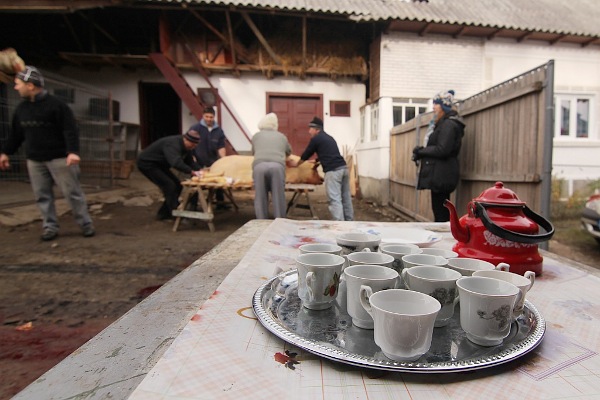Something struck me when photographing a traditional pig butchering, a guy told me with pride “Europe should not tell us how to kill the pig!” (background: European Union tries to impose rules for sacrifices of animals raised in rural households, Romanian peasants refuse due to convenience and price increase).
That is the key to read many recent [in/e]volutions in our society: populist politicians protesting “we are not a colony” when EU tries to push us into civilization, modernization, morals or anti-corruption: we keep the old ways, killing the animals with our hands (and eating their blood), we elect known corrupt politicians and delinquent to rule the country.
And then we drink and wait for an elusive deity to save us all. Welcome to Romania!

 This work is licensed under a Creative Commons Attribution-Share Alike 3.0 License.
This work is licensed under a Creative Commons Attribution-Share Alike 3.0 License.






